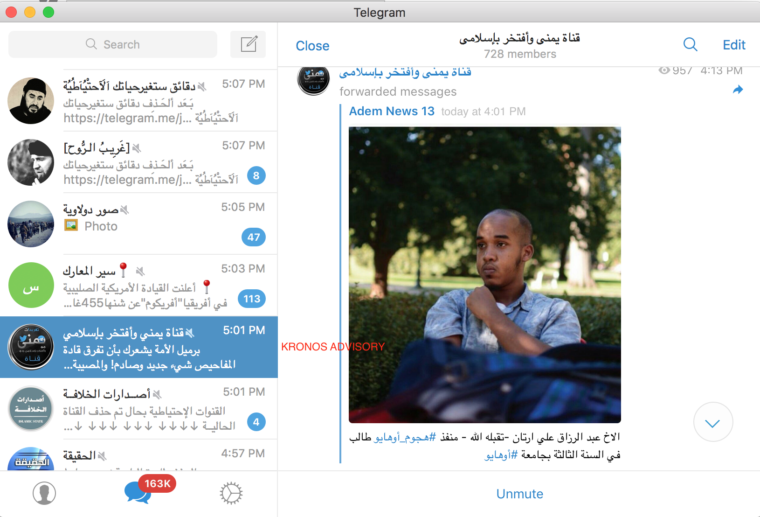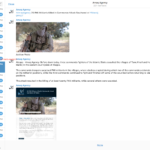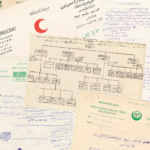AN ANALYST’S VIEW TO THE OSU ATTACK
AN ANALYST’S VIEW TO THE OSU ATTACK
By Michael S. Smith II
The Islamic State claimed credit for the attack executed on the campus of The Ohio State University approximately 14 hours after this report’s publication.
On 28 November 2016, a Somali refugee identified as Abdul Razak Ali Artan was shot and killed by a law enforcement officer who was interdicting a mass-violence situation on The Ohio State University’s campus. Reports indicate Artan used a car and a knife to seriously injure numerous people.
In the 25 August 2016 issue of OSU’s student publication, The Lantern, a brief profile of Artan’s experiences as a student quoted him as stating the following:
“I just transferred from Columbus State. We had prayer rooms, like actual rooms where we could go to pray because we Muslims have to pray five times a day. There’s Fajr, which is early in the morning, at dawn. Then Zuhr during the daytime, then Asr in the evening, like right about now. And then Maghrib, which is like right at sunset and then Isha at night. I wanted to pray Asr. I mean, I’m new here. This is my first day. This place is huge, and I don’t even know where to pray. I want to pray in the open, but I was kind of scared with everything going on in the media. I’m a Muslim, it’s not what the media portrays me to be. If people look at me, a Muslim praying. I don’t know what they’re going to think, what’s going to happen. But, I don’t blame them. It’s the media that put that picture in their heads so they’re just going to have it and it, its’ going to make them feel uncomfortable. I was kind of scared right now. But I just did it. I relied on God. I went over to the corner and just prayed.”
Since the attack occurred, popular pro-Islamic State Telegram messenger channels have posted updates about news reports on the events that unfolded at OSU while encouraging Islamic State supporters to post comments on social media, using the hashtag phrase of the Arabic transliteration of Ohio to drive attention to their posts. Once Artan was identified in news reports, several of these channels posted the photo of Artan that ran in The Lantern with the aforecited profile, referring to him using the honorific term “brother” while lauding his actions.
Certainly, even when there is no linkage to the group, it is common for Islamic State propagandists and supporters to promote information about these types of events in the West. This can help stimulate thinking about the ease with which one may execute an attack to affirm his or her allegiance to the “caliph,” Abu Bakr al-Baghdadi, among “fence sitters” in the US whom the group is using social media as a tool to help engineer a resort to violence.
Certainly, posts about the attack on pro-Islamic State social media accounts do not prove a linkage to the group.
Still, the volume of posts concerning the attack at OSU today suggest Islamic State propagandists and supporters are confident the group will claim credit for the attack. This follows a pattern of activity on social media platforms like Twitter that has succeeded other attacks eventually attributed to the group in the West, such as the 13 November 2015 attacks in Paris, France and the more recent attack in Nice, France.
However, again, this does not prove a linkage to the group. Further, it should not be ruled out that, if meant to show support for a terrorist group, Artan’s attack was motivated by al-Qa’ida.
Do all Muslims who express concerns similar to those evinced by Artan’s comments quoted in The Lantern engage in terroristic activities?
No.
Is it common for Muslims who execute terrorist attacks in the West to affirm allegiance to the Islamic State, or solidarity with al-Qa’ida to express concerns about how Western society views Muslims?
Yes.
Is it more likely an attack like this would be meant to affirm allegiance to the Islamic State than solidarity with al-Qa’ida?
Statistically, yes. Since the Islamic State declared its so-called “caliphate” in June 2014, the group has explicitly claimed credit for 5 attacks executed in the US — the most recent of which was a mass-stabbing attack executed by a Somali-American in Minnesota in September 2016. Meanwhile, although al-Qa’ida has continued petitioning for attacks in the West since mid-2014, providing attack plot concepts and bomb-making instructions in issues of Inspire published online during this time, no attacks in the US have been attributed to al-Qa’ida. Indeed, only one attack in the West — targeting a Charlie Hebdo editor who appeared on a hit list published in Inspire, and his colleagues in January 2015 — has been claimed by al-Qa’ida since mid-2014.
The numbers reflect that the Islamic State is far more persuasive with its appeals for supporters not trained in a conflict zone to execute attacks in the West than al-Qa’ida. Further, the instance rate of attacks in the US, Europe and Canada since mid-2014 indicates the Islamic State may have achieved a capacity to accelerate the radicalization process culminating in a resort to violence. This, by using an authoritative figure in Islamic traditions — a “caliph” — and his proxies to command violence. In the very least, the group’s claim that it has achieved the primary goal of al-Qa’ida and all other Salafi-Jihadist group’s which comprise the Global Jihad movement (ie restoration of a caliphal model of governance) has enabled the Islamic State to stimulate far more terroristic activity against the so-called “enemies of Islam” in the West.
Does Artan’s attack conform to directions devolved by Islamic State leaders and the contents of the group’s propaganda?
Yes.
Firstly, since mid-2014, the following narratives have been echoed in Islamic State leaders’ statements and official Islamic State propaganda:
(1) The Islamic State has “restored” the “caliphate.” Thus (1.1), in accordance with Islamic texts and traditions, all Sunni Muslims must pledge allegiance to the “caliph.” Further, (2) allegiance is affirmed by one of two sets of actions: (2.1) Making hijrah (ie emigrating to the “caliphate”) to help defend and expand territorial holdings, or (2.2) waging jihad at home.
Since mid-2015, statements by Islamic State leaders and the contents of the group’s official propaganda have increasingly emphasized that, as the barriers to waging hijrah are becoming too great, the group’s supporters in the West must wage jihad at home. Addressing Islamic State supporters in the West in his 2016 Ramadan address, Abu Mohamed al-Adnani (r d. 2016), who served as the group’s original spokesman and the manager of its external operations program advised that if authorities “have shut the door of hijrah in your faces, then open the door of jihad in theirs.” As he concluded his petition for attacks in the West, al-Adnani advised: “Know that inside the lands of the belligerent crusaders, there is no sanctity of blood and no existence of those called ‘innocents.’ … Know that your targeting those who are called ‘civilians’ is more beloved to us and more effective, as it is more harmful, painful, and a greater deterrent to them.” (Weeks later, Omar Mateen attributed his attack in Orlando to the Islamic State.)
Al-Adnani’s 2016 Ramadan address was invoked by a French Islamic State member who provided a detailed and gruesome demonstration of how to kill using a knife in an official video produced to push the group’s supporters to attack in the West that was posted online two days before Artan used a kitchen knife to execute the attack at OSU. In this video produced by the group’s Raqqa wilayat (province), Abu Sulayman al-Firansi, who recommend using a kitchen knife to attack the “disbelievers” here in the West, proclaimed, “They closed the door of hijrah on you, so open the door of jihad on them.” (Like many Islamic State videos tailored to incite violence in the West, this video contained English-language subtitles.)
Meanwhile, in the third issue of the group’s publication Rumiyah (November 2016), literally Rome, the Islamic State called for its supporters to use automobiles to execute attacks in the US. Specifically, the group called for the use of large trucks to run over pedestrians in urban settings, referring to the Macy’s Thanksgiving Day Parade as “an excellent target.” Highlighting that either the group’s propaganda is far more persuasive than that of al-Qa’ida, or that it is tailoring messaging to generate operational expectations the group is confident will be met pursuant to exchanges with individuals in the West in advance — or perhaps both — days after this issue of Rumiyah was posted online an individual was arrested for expressing interest in executing an attack in Times Square using a garbage truck to demonstrate his support for the Islamic State.
In addition, in the second issue of Rumiyah (October 2016), the Islamic State called for knife attacks.
Have Islamic State leaders petitioned for attacks in the West using cars and knives?
Yes.
The group has been calling for the use of knives and cars to execute attacks in the West since 2014. In an address posted online in September 2014, while calling for attacks in the West, Islamic State spokesman and external operations manager Abu Muhamad al-Adnani advised:
The best thing you can do is to strive to your best and kill any disbeliever, whether he be French, American, or from any of their allies. …
If you are not able to find an IED or a bullet, then single out the disbelieving American, Frenchman, or any of their allies. Smash his head with a rock, or slaughter him with a knife, or run him over with your car, or throw him down from a high place, or choke him, or poison him. …
If you are unable to do so, then burn his home, car, or business. Or destroy his crops.
Months later, in an address posted online in January 2015, al-Adnani proclaimed:
We will argue, before Allah, against any Muslim who has the ability to shed a single drop of crusader blood but does not do so, whether with an explosive device, a bullet, a knife, a car, a rock, or even a boot or a fist.
Has the Islamic State tailored messaging to build and reinforce support among Somalis?
Yes. Indeed, the group succeeded in generating a large-scale defection of members into its ranks from al-Qa’ida’s East Africa Branch, al-Shabaab. Further, a boom in promotion of links to Telegram channels used to distribute Somali-language versions of official IS media content corresponded with the recent increase in IS attacks and insurgency operations in Somalia. Notably, in recent weeks, the group’s propagandists have promoted invitation links Somali-language Amaq Agency channels. Amaq is essentially Headline News a la Islamic State. In addition to providing dozens of short reports on Islamic State operations in the group’s primary areas of operation on a given day, Amaq is often used to issue initial claims of credit for attacks in the West.
Have “official Islamic State accounts” posted information about the attack in Ohio?
No. Meanwhile, it is important to consider that social media accounts and Telegram Messenger channels which are generally referred to as “official Islamic State accounts” only post official Islamic State statements and other propaganda materials. Thus, as the group has not claimed credit for the attack, it would be very unusual — if not unprecedented — for “official Islamic State accounts” like Nashir and Khilafah News Telegram channels to post information about the attack at OSU.
The Telegram Messenger channels I have observed posting information about the attack are promoted by Telegram channels which are dedicated to providing invitation links to “official Islamic State accounts.” I have high confidence these accounts are managed by Islamic State members who play formal roles in the group’s online recruitment-cum-incitement program, which has proven far more effective than any other terrorist group’s efforts to use social media to build and reinforce support while calling for attacks against Americans and our allies.




